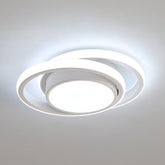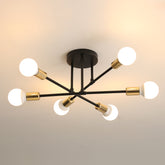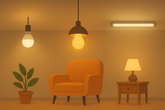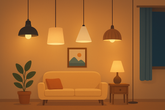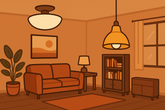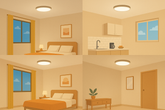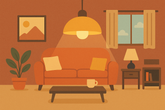Best Lighting Placement Tips: Avoiding Uneven Lighting and Shadows
The Best Placement of Lighting Fixtures: How to Avoid Uneven Lighting and Shadows
When it comes to setting the right atmosphere in your home, lighting is a crucial element. However, many people overlook the importance of the correct placement of lighting fixtures. Improper placement can lead to uneven lighting, shadows, and even glare, affecting the overall comfort and look of your space. In this article, we’ll guide you through the best practices for placing your lighting fixtures to ensure a balanced and harmonious effect.
1. Consider the Purpose of Each Room
Each room in your home serves a different purpose, and so should the lighting fixtures in each. The type of light and the position of the fixture should be tailored to meet the function of the space.
- Living Room: Here, you need a balance of ambient lighting for general illumination, task lighting for reading or activities, and accent lighting for mood. Consider placing overhead lights or wall-mounted lights in the center of the room, and adding lamps next to seating areas.
- Kitchen: Bright, focused lighting is essential here. Install task lighting directly above countertops and cooking areas. Under-cabinet lighting helps to illuminate work surfaces and create an even light distribution.
- Bedroom: Soft, warm light is ideal for creating a cozy environment. Place bedside lamps for reading, and consider recessed or pendant lighting for a relaxing atmosphere without shadows.
2. Avoid Shadows and Glare
One common mistake when installing lighting fixtures is to ignore the positioning, which leads to shadows or glare that can be uncomfortable. To avoid this:
- Shadows: Install lights at a height where they don’t block views or create harsh shadows. For task lighting like desk lamps or reading lights, choose adjustable fixtures so that you can direct light where it’s needed most.
- Glare: Avoid placing lights directly above or too close to reflective surfaces, such as mirrors or glass tables. Consider using diffused light sources or lampshades to soften the light.
3. Consider the Light Type and Temperature
Different types of lighting can affect the mood of the room. For instance, task lighting, such as desk lamps, needs to be bright enough to see clearly, while accent lighting can be softer to create a relaxed atmosphere. Choose the right light temperature based on the room’s purpose:
- Warm Light: Ideal for living rooms, bedrooms, and dining areas. It creates a cozy and inviting atmosphere.
- Cool Light: Works well in kitchens and bathrooms, as it is clearer and more stimulating.
- Neutral Light: Great for spaces like offices or study rooms where clarity and focus are needed.
4. Placement of Different Lighting Types
To optimize lighting distribution:
- Ceiling Lights: These are best for providing general illumination in the center of the room. For rooms with a lot of traffic, consider chandeliers or ceiling fans with built-in lights.
- Wall Lights: Ideal for providing accent lighting and highlighting features of the room. Wall sconces can add charm to the bedroom or hallway.
- Floor and Table Lamps: Perfect for creating cozy corners or additional lighting near seating areas.
Conclusion
By considering the purpose of each room, the height and positioning of the lights, and the type of lighting used, you can avoid uneven lighting, shadows, and glare. Proper placement of lighting fixtures helps to create a harmonious, well-lit environment, improving both the functionality and aesthetics of your home.
